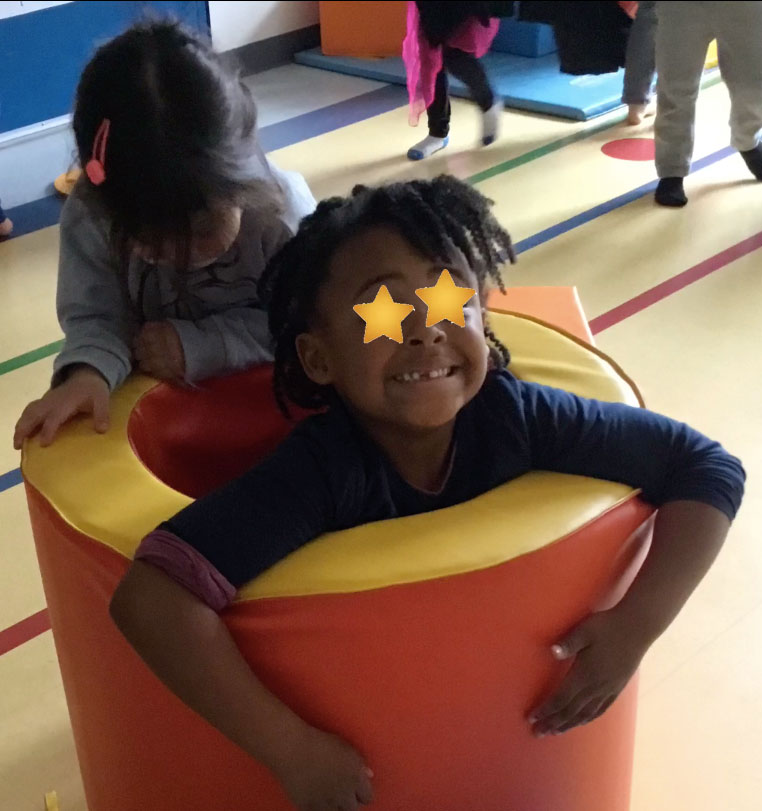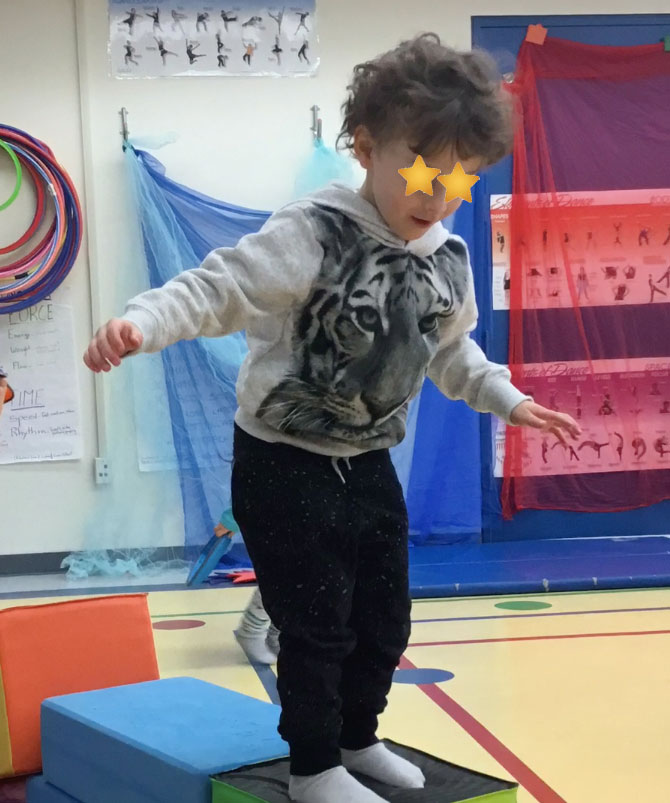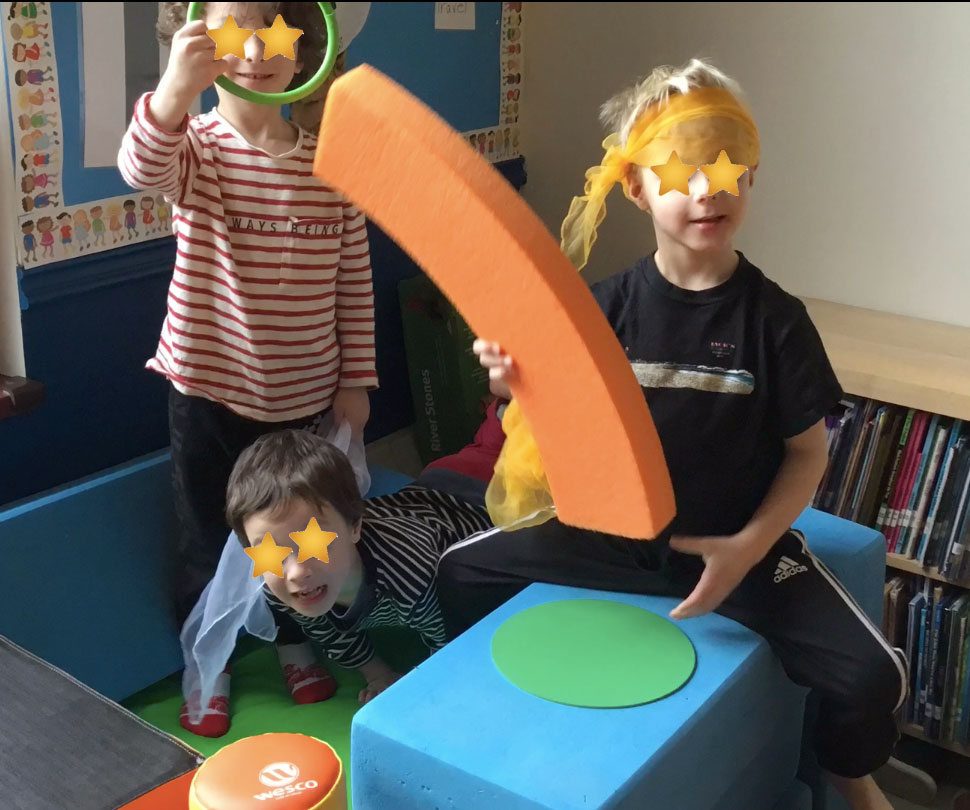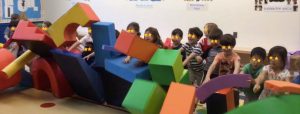


Psychomotricity and movement to enhance SEL skills
Research shows that students who develop SEL skills early improve their behavior. As such, there is a correlation with academic achievement.
Psychomotricity is a discipline taught to young children in Europe, Canada, Latin America, and Asia. It focuses on motor skill and emotional development via creative play that promotes SEL skills. When done a on a regular basis, Psychomotricity gives children the opportunity to learn from each other how to play and interact respectfully and mindfully.

Each class begins with an exercise in teamwork and self-control: waiting for the signal to break down the wall.
At Riverdale, I created a class for PreK through first grade. The class included both guided Psychomotricity (obstacle courses and other motor development exercises) and self-directed play (dramatic play, building structures, etc, which encourage sharing, taking turns, and creativity).
Psychomotricity is an important part of the curriculum in Germany, Austria, Belgium, Denmark, Finland, France, Spain, Holland and at least 13 other countries to help young children develop holistically. It is an effective way to develop SEL skills. The program accompanies the child through the social and emotional maturity stages of his or her development. This holistic program prepares the child physically, emotionally, socially and cognitively for the learning process.
During a psychomotricity class teachers observe how the children play and interact with each other and the materials. It is a “SEL in action” program where teacher observe the sessions, noting if children have a hard time modulating themselves, displaying self-control or finding a partner to play with. Based on observations, teachers can intervene to promote SEL skills and guide students to develop them. At the end of the class we have reflection and sharing, wherein children share their thoughts, emotions, things that they played with, built, etc.
The National Endowment for the Arts discusses how the arts support social emotional development and states: "Dance, for example, allows children to explore and express their feelings and emotions (Zentner & Eerola, 2010), but it also can promote flexibility and improve circulation as well as foster learning in spatial concepts (NEA, 2004).
"Engagement in a dance program was related to improvements in social competence, such as pro-social behaviors and cooperation, and to stronger reductions in internalizing and externalizing problems over time." See
https://www.arts.gov/sites/def
In my classes I use dance and movement exercises that allow students to explore and display emotions with their bodies. This helps develop self-awareness and metacognition.
I also use movement and dance activities that strengthen teamwork and cooperation and help develop social and interpersonal skills.
Dance and movement that use body language as a way of interacting verbally and non-verbally develops communication and social skills.
Dance and movement can help children with cognitive regulation to pay attention to problem-solve and to develop an ability to evaluate and reflect.
reflect.